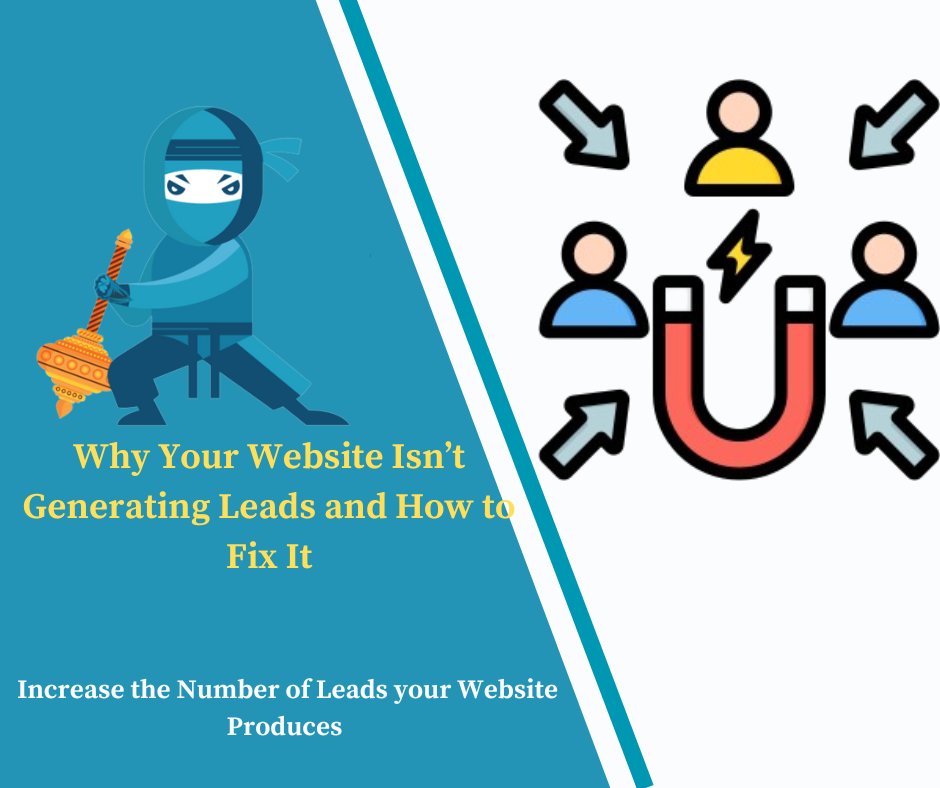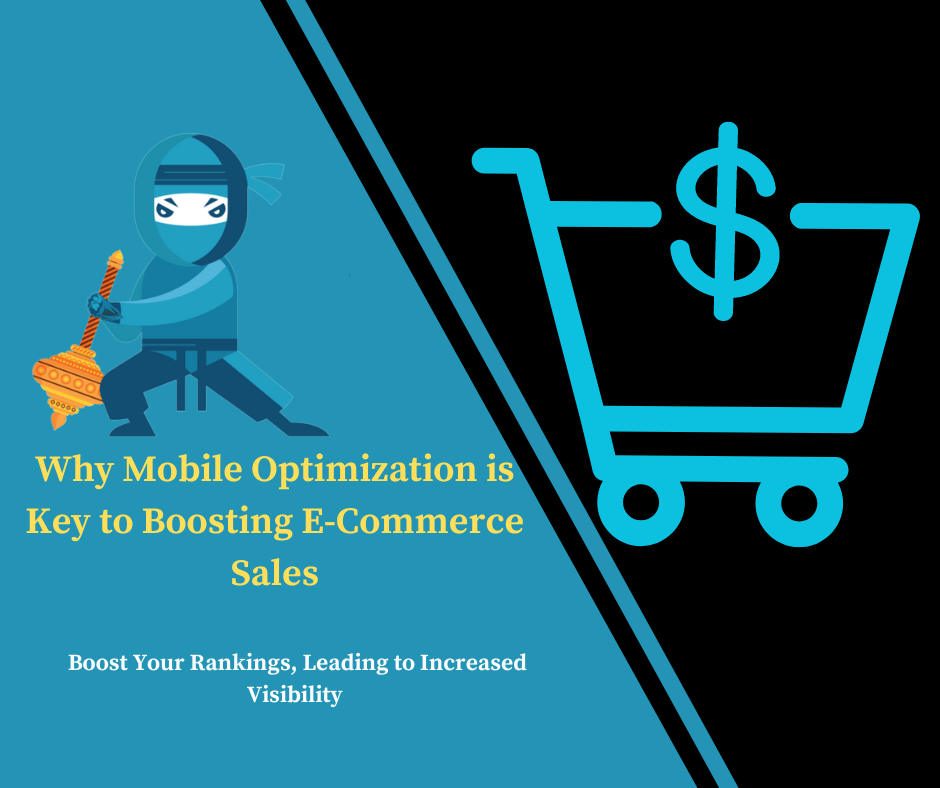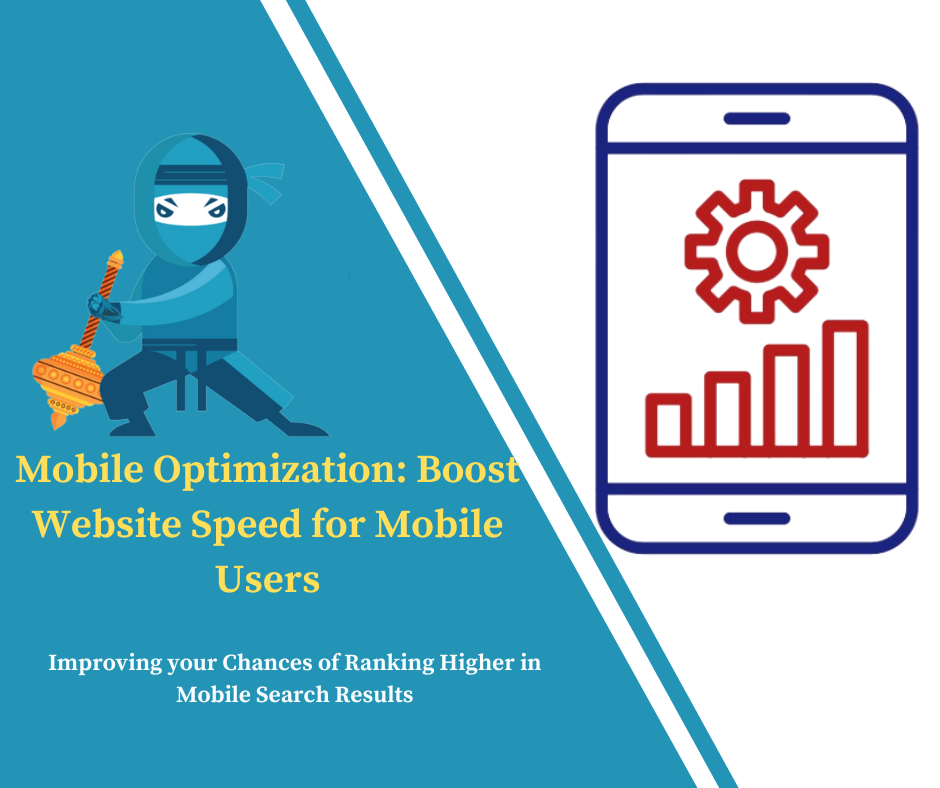Why Your Website Isn’t Generating Leads and How to Fix It

Why Your Website Isn’t Generating Leads and How to Fix It
In an era where digital presence is pivotal for business success, having a website that doesn’t generate leads can be a significant setback. If your website isn’t performing as expected and failing to generate leads, it’s crucial to pinpoint and rectify the issues. This article will explore the common reasons your website might not be generating leads and provide actionable solutions to enhance your lead-generation efforts. By focusing on the keyword “Generating Leads,” we’ll uncover practical strategies to turn your website into a powerful lead magnet.
Common Reasons Your Website Isn’t Generating Leads
1. Unclear or Ineffective Call-to-Actions (CTAs)
Call-to-actions (CTAs) are vital for directing visitors to take specific actions on your website, such as signing up for a newsletter or requesting a demo. If your CTAs are unclear or poorly placed, visitors may not take the desired action, resulting in missed lead-generation opportunities.
How to Fix It
Strategic Placement: Ensure CTAs are positioned prominently on your homepage, within blog posts, and on landing pages.
Design and Visibility: Use contrasting colors and compelling design elements to make CTAs stand out.
Action-Oriented Language: Employ clear, action-driven language in your CTAs, such as “Get Your Free Trial Today” or “Download Our Free E-Book.
2. Ineffective Landing Pages
Landing pages are designed to capture leads by offering targeted content or incentives. If your landing pages are not optimized, they may fail to convert visitors into leads effectively.
Also read: 5 Proven Strategies to Improve Website Lead Generation
How to Fix It
Relevance: Match the content of your landing pages with the ads or links that drive traffic to them. Ensure they meet visitor expectations.
Simplicity: Keep landing page layouts simple and focused. Avoid unnecessary distractions and ensure the lead capture form is easy to complete.
Trust Signals: Incorporate elements such as testimonials, case studies, and trust badges to build credibility and encourage conversions.
3. Poor User Experience (UX)
A website with a poor user experience can deter visitors and negatively impact lead generation. Issues like slow load times, complicated navigation, and lack of mobile optimization can frustrate users and drive them away.
How to Fix It
Speed: Optimize your website’s performance by compressing images, leveraging caching, and minimizing code.
Mobile-Friendly: Ensure your site is responsive and provides a seamless experience across all devices.
Navigation: Streamline navigation by using a clear and intuitive menu structure. Make it easy for users to find what they’re looking for.
Also read: How to Turn Your Website into a Lead Generation Machine
4. Ineffective Content Strategy
Content plays a crucial role in attracting and engaging potential leads. If your content doesn’t address the needs or interests of your target audience, it won’t be effective in generating leads.
How to Fix It
Audience Research: Conduct thorough research to understand your target audience’s pain points and interests. Create content that addresses these needs.
Quality: Focus on producing high-quality, valuable, and engaging content. Use various formats such as blogs, videos, and infographics to appeal to different preferences.
SEO: Optimize your content for search engines to improve visibility and attract organic traffic. Use relevant keywords and follow best SEO practices.
5. Lack of Lead Capture Forms
Lead capture forms are essential for collecting visitor information. If your website lacks these forms or if they are not easily accessible, you’re missing out on potential leads.
How to Fix It
Visibility: Place lead capture forms in strategic locations such as the homepage, blog posts, and landing pages.
Design: Design forms to be user-friendly and straightforward. Minimize the number of fields to increase completion rates.
Incentives: Offer incentives like free trials, eBooks, or discounts in exchange for visitors’ contact information to encourage form submissions.
6. Absence of Follow-Up Strategies
Generating leads is only part of the process; effective follow-up is crucial for converting leads into customers. Without a proper follow-up strategy, you may fail to nurture and engage potential leads.
How to Fix It
Email Automation: Utilize email marketing automation to send timely and relevant follow-up messages.
Personalization: Tailor follow-up communications based on the lead’s behavior and interests to make them more effective.
Tracking: Monitor lead interactions and adjust follow-up strategies based on engagement levels and feedback.
7. Not Leveraging Social Proof
Social proof, such as customer reviews and case studies, can significantly enhance your credibility and influence potential leads. A lack of social proof may result in lower trust and fewer conversions.
How to Fix It
Reviews: Display customer reviews and testimonials prominently on your website to build trust and credibility.
Case Studies: Share detailed case studies that highlight successful client outcomes and demonstrate the value of your products or services.
Social Media: Use social media platforms to showcase positive feedback and interactions, reinforcing your reputation and attracting potential leads.
8. Ineffective Lead Nurturing
Lead nurturing is vital for building relationships with potential customers and guiding them through the sales funnel. Without effective nurturing, you may struggle to convert leads into paying customers.
How to Fix It
Segmentation: Segment your leads based on their interests and behavior to deliver more personalized and relevant content.
Drip Campaigns: Implement drip email campaigns that provide valuable information and keep leads engaged over time.
Content Offers: Provide additional valuable content offers, such as webinars or whitepapers, to maintain lead interest and encourage further interaction.
FAQ
What is a call-to-action (CTA), and why is it crucial for generating leads?
A call-to-action (CTA) is a prompt that encourages visitors to take a specific action, such as signing up for a newsletter or requesting a demo. CTAs are crucial for generating leads because they guide visitors toward the actions needed to capture their contact information and convert them into leads.
How can I optimize my landing pages for better lead generation?
To optimize landing pages, ensure that the content is relevant to the traffic source, maintain a simple and focused layout, and include trust signals such as testimonials and reviews. Testing different elements and analyzing performance metrics can also help enhance landing page effectiveness.
Why is user experience (UX) important for lead generation, and how can I improve it?
User experience (UX) is important because it affects how visitors interact with your site. A positive UX can keep visitors engaged and increase the likelihood of lead conversion. Improve UX by optimizing website speed, ensuring mobile-friendliness, and simplifying navigation.
How does content strategy impact lead generation, and what should I focus on?
A strong content strategy attracts and engages potential leads by providing valuable information that addresses their needs. Focus on creating high-quality, relevant content that appeals to your target audience and optimizing it for search engines to improve visibility and attract traffic.
What should I consider when designing lead capture forms?
When designing lead capture forms, ensure they are visible, user-friendly, and have minimal fields to increase completion rates. Place them in strategic locations and consider offering incentives, such as discounts or free resources, to encourage submissions.
How can I effectively follow up with leads to improve conversion rates?
To effectively follow up with leads, use email marketing automation to send timely and relevant messages, personalize communications based on lead behavior, and track interactions to adjust your follow-up strategies as needed. This helps maintain engagement and move leads through the sales funnel.
What role does social proof play in lead generation, and how can I use it?
Social proof, such as customer reviews and case studies, enhances credibility and influences potential leads by demonstrating the value of your products or services. Use social proof by prominently displaying reviews, sharing case studies, and showcasing positive feedback on social media.
How can I implement effective lead nurturing strategies?
Effective lead nurturing involves segmenting leads based on their interests and behavior, implementing drip email campaigns that provide valuable information, and offering additional content such as webinars or whitepapers. These strategies help build relationships and guide leads through the sales funnel.
Conclusion
Generating leads is a multifaceted process that involves optimizing various aspects of your website. By addressing the common issues outlined above and implementing the recommended solutions, you can enhance your website’s effectiveness in generating leads. Remember, continuous improvement and adaptation are key to maintaining a high-performing lead generation strategy.



